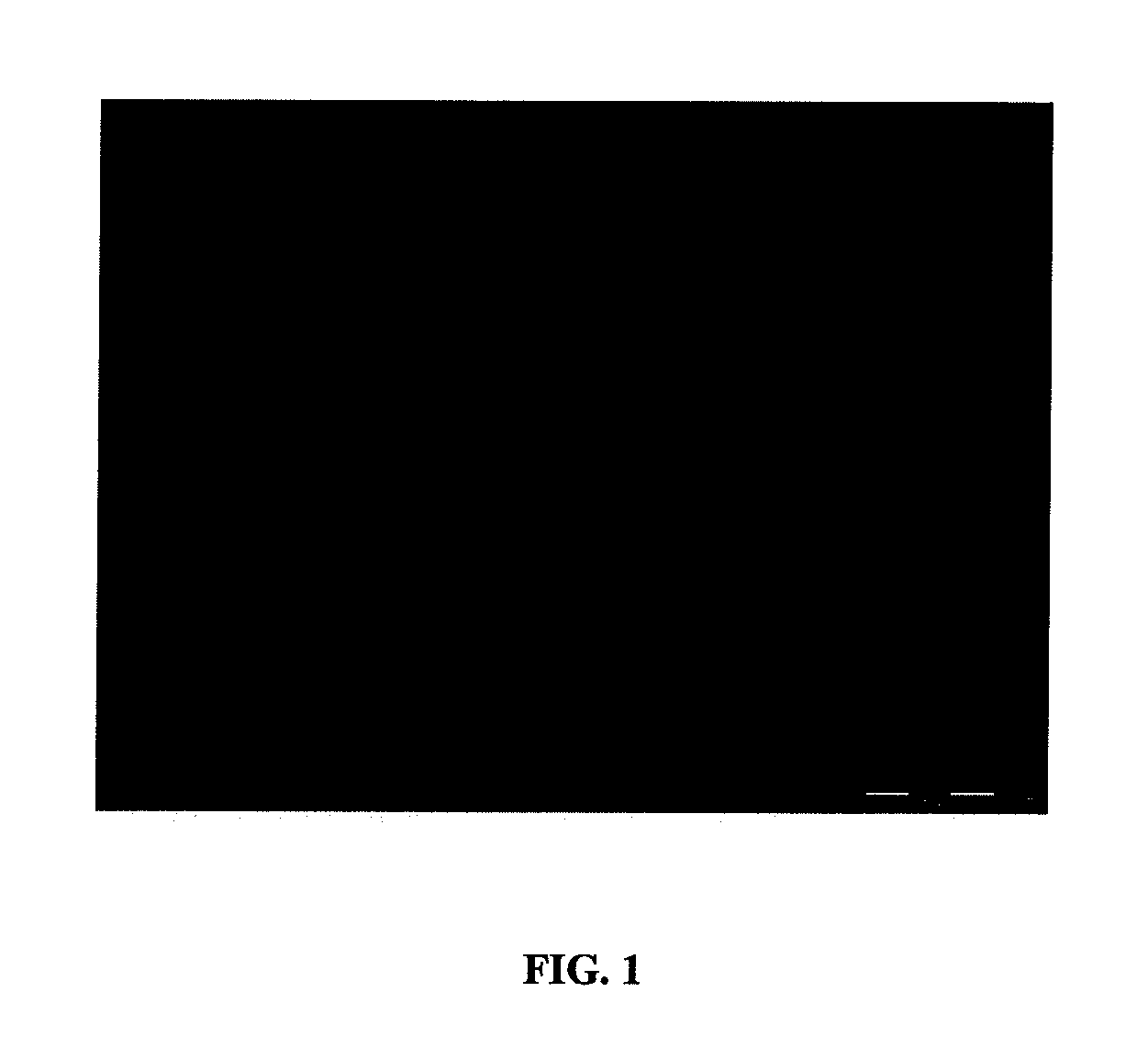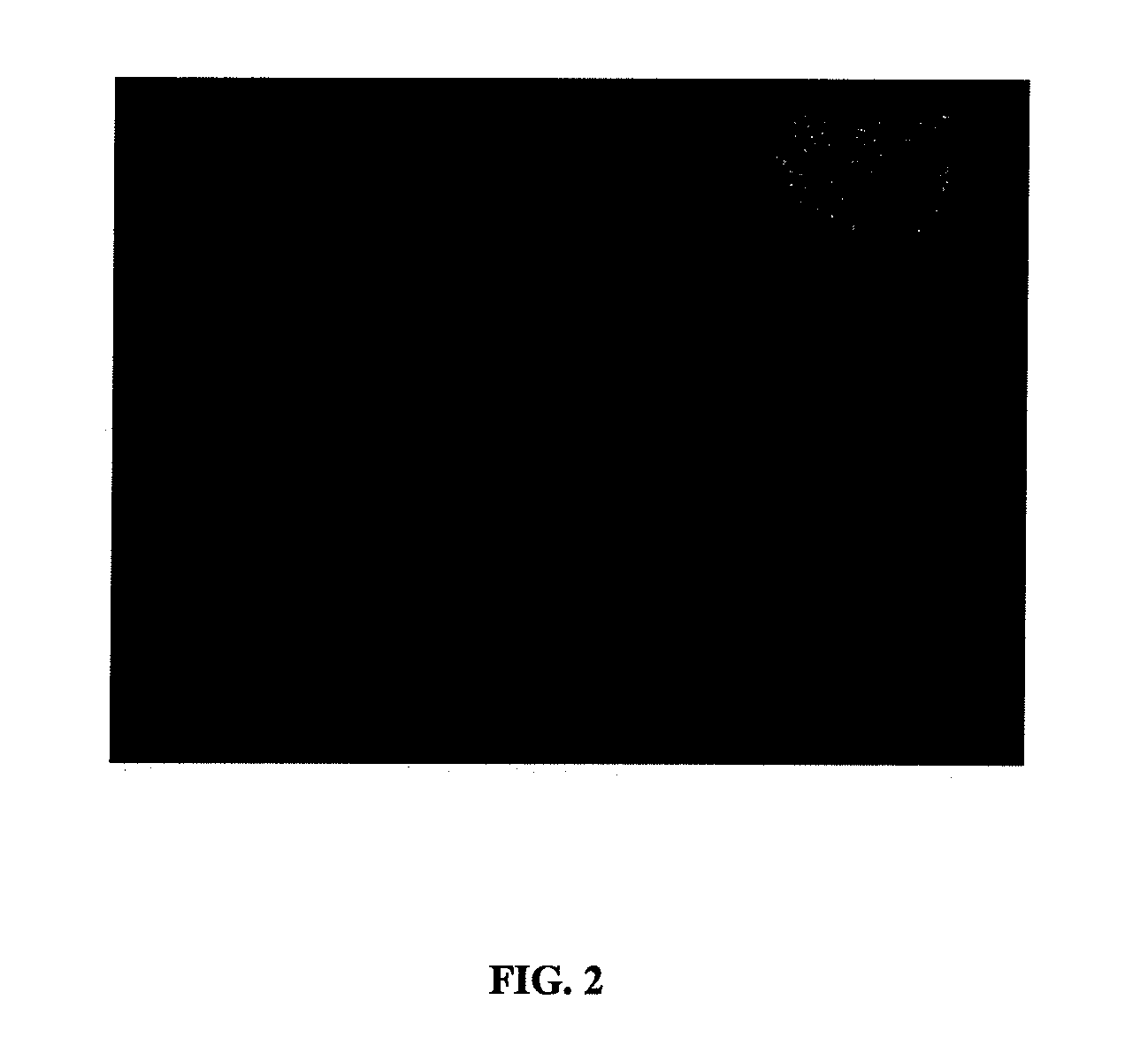Methods for embryonic stem cell culture
a stem cell and embryonic technology, applied in the field of embryonic stem cell culture, can solve the problems of limited use of pluripotent stem cells and multipotent cells in medicine, affecting the survival rate of embryonic stem cells, and reducing the yield of differentiated cells. , to achieve the effect of assessing the effect, maintaining and/or differentiation of cells
- Summary
- Abstract
- Description
- Claims
- Application Information
AI Technical Summary
Benefits of technology
Problems solved by technology
Method used
Image
Examples
example 1
Encapsulation of Human ESC In Alginate Beads
Cell Culture
[0182]The process of developing the feeder layer involved primary murine embryonic fibroblast (MEF). Briefly, a female mouse (strain Swiss MF1) was sacrificed in her 13th day of pregnancy by schedule I killing. Then the embryos were pulled out and their viscera removed. Embryo carcasses were finely minced in trypsin / EDTA solution (0.05% trypsin / 0.53 mM EDTA in 0.1 M PBS without calcium or magnesium; Gibco Invitrogen, Life Technologies, Paisley, UK) and seeded in culture flasks in high-glucose DMEM supplemented with 10% v / v heat-inactivated FBS, 0.1 mM MEM non-essential amino acids solution, 100 U / ml penicillin, 100 μg / ml streptomycin (all from Gibco Invitrogen, Life Technologies, Paisley, UK). When the cells reached confluence, the fibroblasts were harvested and frozen in MEF freezing medium containing 60% v / v high-glucose DMEM, 20% v / v heat-inactivated FBS (all from Gibco Invitrogen, Life Technologies, Paisley, UK) and 20% v / v...
example 2
Differentiating Single mES Cells
[0201]A single mES cell was encapsulated within a hydrogel bead (diameter 40-100 μm) and grown for 10 days in maintenance medium, M2 [Dulbecco's Modified Eagles Medium (DMEM), 10% (v / v) fetal calf serum, 100 units / mL penicillin and 100 μg / mL streptomycin, 2 mM L-glutamine (all supplied by Invitrogen, UK), 0.1 mM 2-Mercaptoethanol (Sigma, UK) and 1000 units / mL Esgro™ (LIF) (Chemicon, UK)]. The single ES cell undergoes division to form a small colony of cells at around 10 days (FIG. 8). These cells can be driven to differentiate into mature cells of different lineages by stimulation with established lineage-specific signals. For instance, in the case of osteogenic differentiation, the protocol described later is followed.
example 3
Comparative Method, Traditional 2D mES Cell Routine Maintenance and Passage (References 2& 3)
[0202]The E14Tg2a murine embryonic stem (mES) cell line was routinely passaged on 0.1% gelatin coated tissue culture plastic in a humidified incubator set at 37° C. and 5% CO2 (h37 / 5). Undifferentiated mES cells (<p20) were passaged every 2 or 3 days and fed every day with fresh M2 medium [Dulbecco's Modified Eagles Medium (DMEM), 10% (v / v) fetal calf serum, 100 units / mL penicillin and 100 μg / mL streptomycin, 2 mM L-glutamine (all supplied by Invitrogen, UK), 0.1 mM 2-Mercaptoethanol (Sigma, UK) and 1000 units / mL Esgro™ (LIF) (Chemicon, UK)]. To detach the mES, cells a desired amount of trypsin-ethylenediaminetetraacetic acid (EDTA) (TE) (Invitrogen, UK) was administered to the mES cells for 3-5 minutes (h37 / 5) after medium aspiration and a single wash with prewarmed PBS.
2D EB Formation
[0203]Embryoid body formation involved careful preparation of mES cells prior to suspension culture and is ...
PUM
| Property | Measurement | Unit |
|---|---|---|
| Temperature | aaaaa | aaaaa |
| Temperature | aaaaa | aaaaa |
| Temperature | aaaaa | aaaaa |
Abstract
Description
Claims
Application Information
 Login to View More
Login to View More - R&D
- Intellectual Property
- Life Sciences
- Materials
- Tech Scout
- Unparalleled Data Quality
- Higher Quality Content
- 60% Fewer Hallucinations
Browse by: Latest US Patents, China's latest patents, Technical Efficacy Thesaurus, Application Domain, Technology Topic, Popular Technical Reports.
© 2025 PatSnap. All rights reserved.Legal|Privacy policy|Modern Slavery Act Transparency Statement|Sitemap|About US| Contact US: help@patsnap.com



